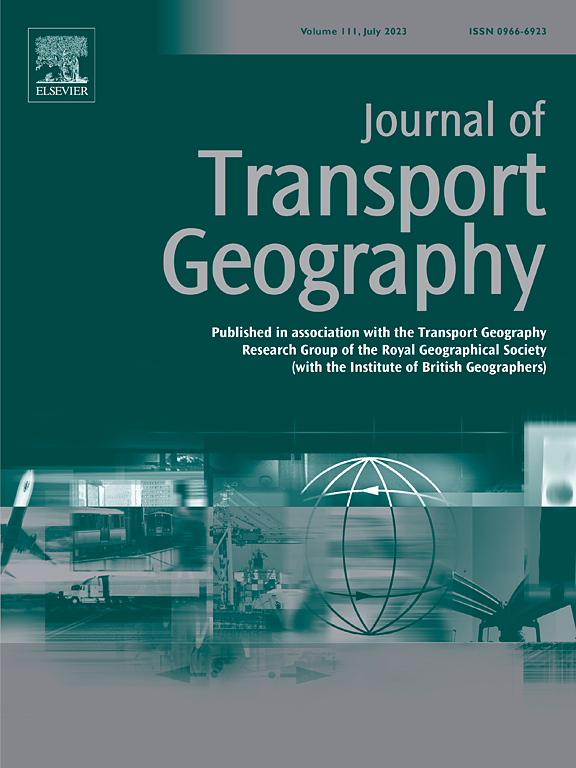农村建成环境对居民非通勤出行方式选择的影响
IF 6.3
2区 工程技术
Q1 ECONOMICS
引用次数: 0
摘要
随着中国城市化进程的加快,以集中式农民住宅为主的农村社区规模显著扩大。然而,关于建筑环境如何影响这些地区非通勤出行方式选择的研究却很少。本研究使用极端梯度增强和SHapley加性解释模型分析了成都12个农村社区的非通勤出行,以检验建筑环境变量“5d”(密度、多样性、设计、目的地可达性、交通距离)和绿地密度与出行方式(步行、汽车、公共汽车、两轮车)之间的非线性关系。主要研究结果显示,适度的绿地密度会促进步行和两轮车的使用,而过低或过高的绿地密度则会阻碍步行和两轮车的使用。靠近市中心增加了步行,减少了对汽车和两轮车的依赖。较高的建筑密度会促进步行,但较高的人口密度会阻碍步行。道路密度有利于步行和两轮车,但可能会阻碍汽车的使用。适度的土地利用组合支持两轮车和公共汽车的使用;过多的多样性可能会阻碍步行。尽管交通便利,但公共交通的不足阻碍了公共汽车的使用。这些见解强调了定制农村建筑环境的必要性,以促进可持续的、非通勤的旅行行为。本文章由计算机程序翻译,如有差异,请以英文原文为准。
The influence of rural built environment on residents' non-commuting travel mode choices
With the rapid urbanization in China, rural communities featuring centralized farmer residences have expanded significantly. However, limited research has focused on how the built environment influences non-commuting travel mode choices in these areas. This study analyzed non-commuting travel in 12 rural communities in Chengdu using Extreme Gradient Boosting and SHapley Additive exPlanations models to examine nonlinear relationships between built environment variables—the “5Ds” (density, diversity, design, destination accessibility, distance to transit) and green space density—and travel modes (walk, car, bus, two-wheeler). Key findings reveal that moderate green space density enhances walking and two-wheeler use, while too low or high levels discourage them. Proximity to the city center increases walking and reduces reliance on cars and two-wheelers. Higher building density promotes walking, but higher population density discourages it. Road density favors walking and two-wheelers but may deter car use. Moderate land use mix supports two-wheeler and bus use; excessive diversity may deter walking. Insufficient public transportation discourages bus usage despite accessibility. These insights highlight the need to tailor rural built environments to promote sustainable, non-commuting travel behaviors.
求助全文
通过发布文献求助,成功后即可免费获取论文全文。
去求助
来源期刊

Journal of Transport Geography
Multiple-
CiteScore
11.50
自引率
11.50%
发文量
197
期刊介绍:
A major resurgence has occurred in transport geography in the wake of political and policy changes, huge transport infrastructure projects and responses to urban traffic congestion. The Journal of Transport Geography provides a central focus for developments in this rapidly expanding sub-discipline.
 求助内容:
求助内容: 应助结果提醒方式:
应助结果提醒方式:


